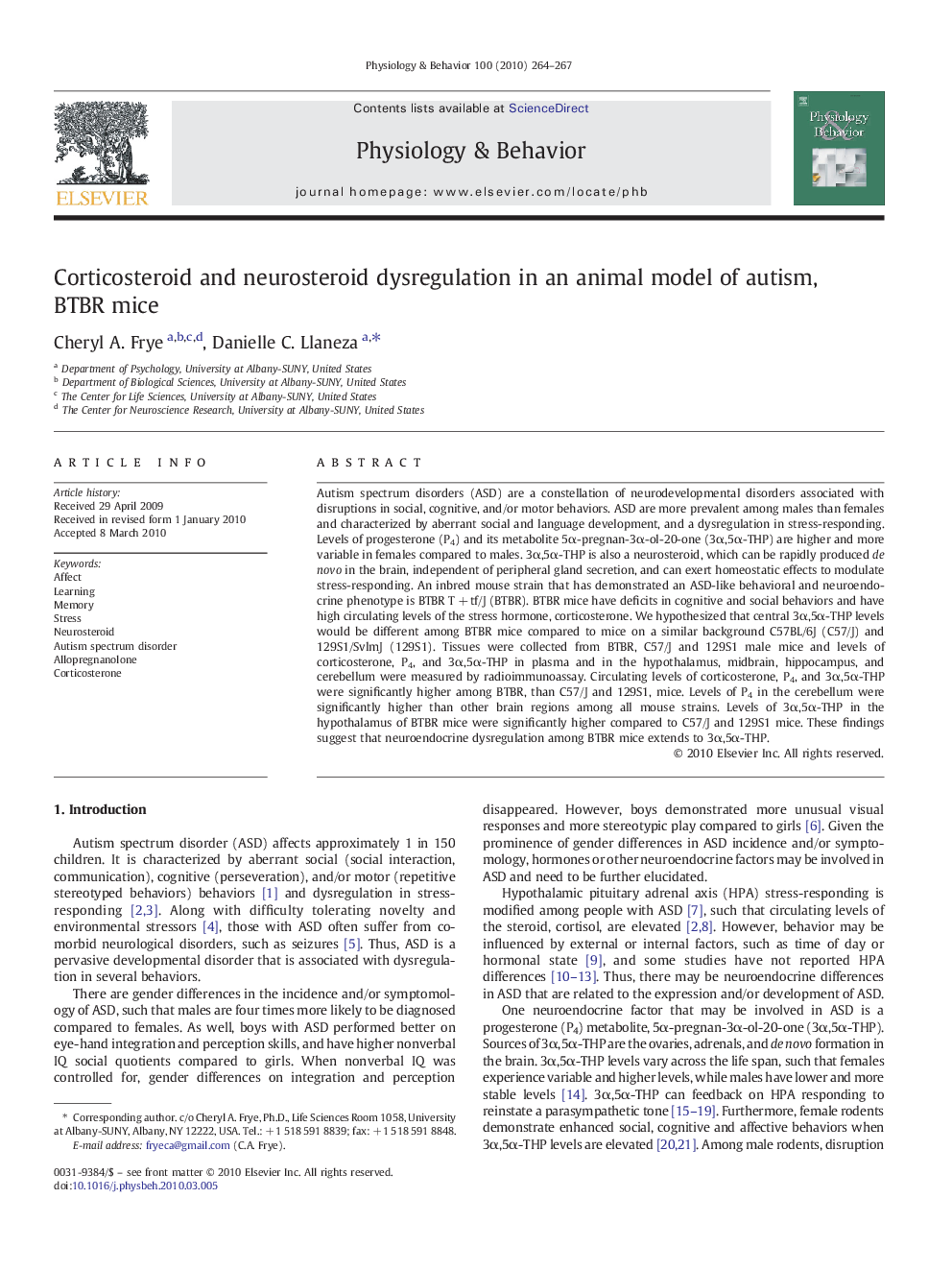| Article ID | Journal | Published Year | Pages | File Type |
|---|---|---|---|---|
| 2845066 | Physiology & Behavior | 2010 | 4 Pages |
Autism spectrum disorders (ASD) are a constellation of neurodevelopmental disorders associated with disruptions in social, cognitive, and/or motor behaviors. ASD are more prevalent among males than females and characterized by aberrant social and language development, and a dysregulation in stress-responding. Levels of progesterone (P4) and its metabolite 5α-pregnan-3α-ol-20-one (3α,5α-THP) are higher and more variable in females compared to males. 3α,5α-THP is also a neurosteroid, which can be rapidly produced de novo in the brain, independent of peripheral gland secretion, and can exert homeostatic effects to modulate stress-responding. An inbred mouse strain that has demonstrated an ASD-like behavioral and neuroendocrine phenotype is BTBR T + tf/J (BTBR). BTBR mice have deficits in cognitive and social behaviors and have high circulating levels of the stress hormone, corticosterone. We hypothesized that central 3α,5α-THP levels would be different among BTBR mice compared to mice on a similar background C57BL/6J (C57/J) and 129S1/SvlmJ (129S1). Tissues were collected from BTBR, C57/J and 129S1 male mice and levels of corticosterone, P4, and 3α,5α-THP in plasma and in the hypothalamus, midbrain, hippocampus, and cerebellum were measured by radioimmunoassay. Circulating levels of corticosterone, P4, and 3α,5α-THP were significantly higher among BTBR, than C57/J and 129S1, mice. Levels of P4 in the cerebellum were significantly higher than other brain regions among all mouse strains. Levels of 3α,5α-THP in the hypothalamus of BTBR mice were significantly higher compared to C57/J and 129S1 mice. These findings suggest that neuroendocrine dysregulation among BTBR mice extends to 3α,5α-THP.
